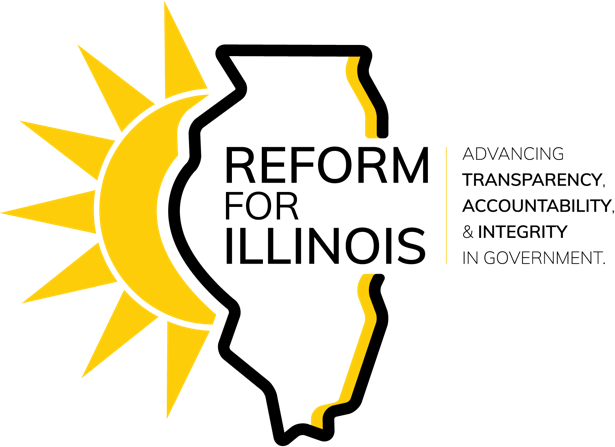Illinois Isn’t the Only Politically Divided State Experiencing Turmoil
As the Illinois General Assembly labors through a special session aimed at bringing the state’s budget crisis to an end, the staggering lack of progress in state government is baffling to the average voter. Despite their efforts, legislators have repeatedly left Springfield with little to show for it. Much of this inaction has resulted from substantial policy disagreements between the General Assembly’s Democratic majority and Republican Governor Bruce Rauner. This raises questions about how states such as Illinois function under divided government – where different branches of the government are controlled by opposing political parties.
Divided State Governments Across the Nation
Across the nation, thirty-one states currently have a “unified” party in control of state government, in which one party controls both houses of the legislature and the governor’s mansion. Nineteen states have a divided government, in which one party controls at least one chamber of the legislature, and another holds the governorship.

Among the states with a divided government, many have experienced serious political infighting between opposing political parties. North Carolina has served as a clear example of this in recent years. The 2016 election of Democrat Roy Cooper as Governor broke up the previous Republican unified control in the state. Shortly before Cooper took office, the Republican-controlled state legislature and outgoing Republican Governor acted quickly to strip a litany of powers from the executive branch, generating significant backlash in the media and drawing a lawsuit from Cooper.
Divided government has also been associated with budget crises in states beyond Illinois. For three-quarters of the 2016 fiscal year, Pennsylvania languished without a budget, caused by a clash between the Republican-controlled state legislature and the Democratic governor. In Louisiana, which became a divided government in 2016 when Democrat John Bel Edwards took office as Governor, it took a recent special session for lawmakers to reach an agreement on the budget for the 2018 fiscal year. This marked the first time in seventeen years that the state has not passed a budget during its regular session.
Additionally, Alaska – where Republicans control the State Senate, Democrats control the State House of Representatives, and an Independent controls the governor’s mansion – still lacks a budget for the upcoming fiscal year due to disagreements between the two parties. An impending state government shutdown on July 1st looms for Alaska if the two sides cannot come to an agreement.
In spite of these examples, some states with divided government have not been mired in political controversy. Colorado, in particular, stands out as an example of a divided state government that works. The Centennial State has a Democratic governor, and a legislature that has been referred to as one of the most polarized in the country, where each party controls one chamber. Still, state lawmakers managed to push through a $26.8 billion spending bill in April of this year and had what Colorado Governor Hickenlooper believed to be the “most productive” legislative session since he took office in 2011.

Illinois vs. Other Divided State Governments
What causes the difference between the success of Colorado and the inaction of Illinois? Research from the National Conference of State Legislatures suggests that in divided governments, legislative leadership plays a particularly important role in breaking through gridlock by making deals and negotiating compromises. For example, the differences between legislative leaders in Colorado and Illinois are stark.
In Colorado, the 2017 legislative session saw a new Speaker, Majority Leader, and Minority Leader take office in the State House of Representatives and a new President and Majority Leader take office in the State Senate. After the successful session, the Denver Post heaped praise on legislative leaders for their statesmanship and ability to reach across the aisle. This differs drastically from the length of some leadership terms in Illinois, including Speaker of House Michael Madigan, who has held that position for more than thirty years.
States with divided government can also experience turmoil when a new Governor steps into the Executive Branch. In Pennsylvania, which rivals Illinois for the longest state budget impasse (though it lasted less than half of the time Illinois’ has), Democratic businessman Tom Wolf took office as the new Governor in 2015. He was then embattled in a months-long standoff with Republican House and Senate leadership, who have both served in the legislature since 2001. The Republican Speaker of the House, Mike Turzai, is now considering a gubernatorial bid against Wolf in 2018.
While some states do have different circumstances from Illinois, others, including Pennsylvania, seem eerily similar. Still, legislative leaders and governors from opposite parties in these states work together to come up with a meaningful compromise for both sides. With days left in this year’s special session, it’s time for Illinois elected officials to do the same.
Back
